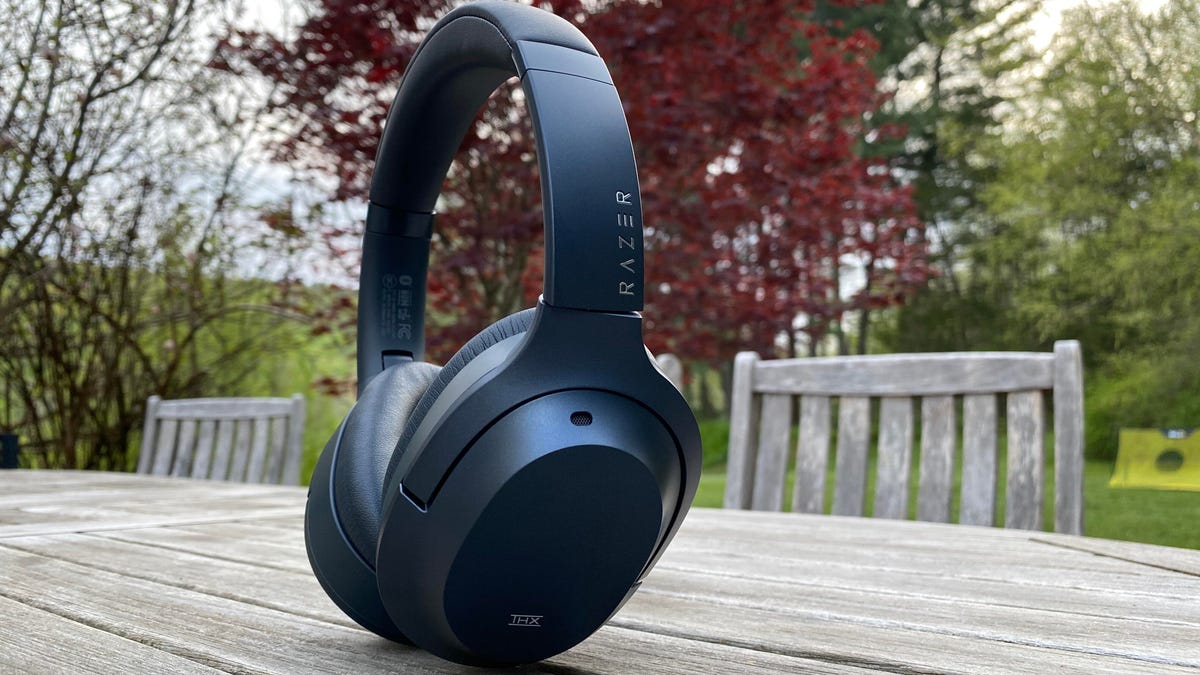 Why You Can Trust CNET
Why You Can Trust CNET Razer's new Opus headphones take on Bose and Sony
No, the Opus isn't a gaming headset. It's an everyday noise-canceling headphone with THX certification for $200. Here are our hands-on impressions.
When you hear Razer -- best known for its gaming laptops and accessories -- is releasing a new noise-canceling headphone, the first thing you probably ask yourself is whether it's a gaming headphone. Surprisingly, when it comes to the new $200 Opus, the answer is no. It's an everyday noise-canceling headphone that Razer hopes its gaming-oriented customers will buy instead of more expensive models from Bose , Sony and others. While the Opus doesn't have the most distinguishing external design, it does sound pretty darn good and overall performed quite well during the few days I spent with it.
The folks from Razer say they've been working on the Opus for many months. To establish street cred with audiophiles, they decided to get the headphones THX Certified. That meant meeting stringent requirements, including a "frequency range and response that are capable of delivering clear, detailed vocals and deep impactful bass with zero distortion at high volumes," according to THX, which is owned by Razer.
What you get in the Opus is a headphone that delivers clean, nicely detailed sound with well-defined punchy bass. You can tweak the sound profile in the companion app, but I mainly stuck to the THX setting, which suited my musical tastes just fine. I also thought the sound was pretty open for a closed-back headphone -- the sound doesn't feel stuck inside your head.
That's the good news. The bad news is the Opus isn't quite as good a headphone as the Sony WH-1000XM3, which carries a list price of $350 but often sells for less than $300. For starters, while the Opus is a very comfortable headphone with soft, plush ear pads, the Sony is slightly more comfortable and 11 grams lighter than the 265-gram (9.4-ounce) heft of the Opus. I also liked the sound of the Sony better -- it's just a little bigger, richer and more visceral. However, like I said, the 1000XM3 does cost substantially more.
Read more: Best noise-canceling headphones of 2020
The Opus gets a lot of other things right. It automatically pauses your music when you take the headphones off your ears and resumes playing when you put the headphones back on. The noise-canceling seemed quite solid (I need to do some more testing there) and callers said I sounded clear when I was using the headphones to make calls (the background noise reduction was good).
The THX logo is relatively subdued.
To be clear, THX Certification doesn't mean these are surround-sound headphones. They work just fine for watching movies -- and gaming -- but they're tuned for listening to music. Battery life is rated at up to 25 hours, about average for these types of full-size noise-canceling headphones.
These have support for the AptX streaming codec that's available for users of certain devices like Samsung's Galaxy smartphones. But what's a little odd is that the headphones use Bluetooth 4.2 not 5.0. They do have USB-C charging and come with a nice carrying case as well as a cord in case you want to go wired. The headphones have physical rather than touch controls and there's a button you can press and hold to allow in ambient sound, so you can hear the outside world and have a conversation with the headphones on. Razer calls the feature the same thing Sony does: a Quick Attention Mode.
As I said, I was generally impressed. I don't think they're quite up to the level of the Sony WH-1000XM3 or the excellent Bose Noise Cancelling Headphones 700 ($400), but they certainly measure up well to other headphones in their price class and I think that it was smart for Razer to keep the price at less than $200 (it's technically $199.99), where there's a little less competition for more premium noise-canceling models. That said, Sennheiser's new HD 450BT noise-canceling headphone sells for $150 and offers comparable sound. It also has a sidetone feature that allows you to hear your voice inside the headphones when you're making calls (the Opus does not appear to have that feature). I do think the Opus is slightly more comfortable, particularly for those with larger heads.
I'll have a full review down the road, but in the meantime here are the Opus' highlights, according to Razer.
Razer Opus key specs
- THX Certified for clear vocals and dialog with no distortion
- Advanced ANC: Hybrid active noise cancellation with 4 dedicated ANC mics
- Plush leatherette foam ear cushions and headband
- Opus Mobile App: THX-tuned EQ presets, automatic settings and battery status
- Quick Attention Mode for situational awareness whenever you need it
- Auto Pause/Auto Play
- Up to 25 hours battery life with ANC on
- Drivers: 2x 40mm dynamic drivers
- Weight: 265g
- Frequency response: 20Hz-20kHz
- Microphones: 4 for hybrid ANC, 2 for voice chat
- Connectivity: Bluetooth 4.2 and 3.5mm
- Codecs: AAC and APTX, 4.2, A2DP, AVRCP, HFP
- USB-C charging
- $200, 210 euros (roughly £190, AU$350)


